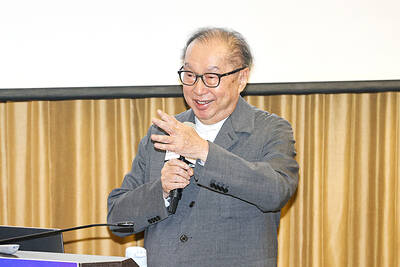MediaTek Inc (聯發科), which designs chips for smartphone vendor Xiaomi Corp (小米), is expected to see its revenue grow by 17.6 percent annually this year, benefiting primarily from strong growth at Chinese smartphone vendors, TrendForce Corp (集邦科技) said yesterday.
MediaTek is one of few chip designers that would see its revenue grow by a double-digit percentage from a year earlier, TrendForce said.
The company’s revenue is to expand to US$8.9 billion this year, compared with U$7.59 billion last year, retaining its position as the world’s third-biggest chip designer, the Taipei-based market researcher said.
The Hsinchu-based company has a long list of Chinese clients, including Oppo Mobile Telecommunications Corp (歐珀移動) and Vivo Electronics Corp (維沃移動通信).
MediaTek expects its market share in China to rise to between 40 and 50 percent this year, from 40 percent last year.
Realtek Semiconductor Corp (瑞昱), which is also a Hsinchu-based supplier of Wi-Fi and TV chips, is in the world’s top 10 chip designer list for the first time this year with revenue expected to rise 22.5 percent annually to US$1.25 billion, TrendForce said.
Qualcomm Inc this year retained its position as the world’s No. 1 mobile phone chipmaker, but its revenue is to shrink 4.5 percent annually from last year’s US$16 billion to US$15.28 billion, TrendForce said.
Intensifying competition from MediaTek and Chinese rivals, namely Hisilicon Technologies Co (海思半導體) and Spreadtrum Communications Inc (展訊), is the reason for the decline, TrendForce said.
Qualcomm’s revenue was also affected by the recall of Samsung’s flagship smartphone, the Galaxy Note 7, TrendForce said.
HiSilicon Technologies, a chip arm of Huawei Technologies Co (華為), is expected to see its revenue increase 11.8 percent to US$3.98 billion, while Spreadtrum Communications is expected to see its revenue grow by 8.1 percent this year to US$1.91 billion, TrendForce said.

BYPASSING CHINA TARIFFS: In the first five months of this year, Foxconn sent US$4.4bn of iPhones to the US from India, compared with US$3.7bn in the whole of last year Nearly all the iPhones exported by Foxconn Technology Group (富士康科技集團) from India went to the US between March and last month, customs data showed, far above last year’s average of 50 percent and a clear sign of Apple Inc’s efforts to bypass high US tariffs imposed on China. The numbers, being reported by Reuters for the first time, show that Apple has realigned its India exports to almost exclusively serve the US market, when previously the devices were more widely distributed to nations including the Netherlands and the Czech Republic. During March to last month, Foxconn, known as Hon Hai Precision Industry

Taiwan Semiconductor Manufacturing Co (TSMC, 台積電) and the University of Tokyo (UTokyo) yesterday announced the launch of the TSMC-UTokyo Lab to promote advanced semiconductor research, education and talent development. The lab is TSMC’s first laboratory collaboration with a university outside Taiwan, the company said in a statement. The lab would leverage “the extensive knowledge, experience, and creativity” of both institutions, the company said. It is located in the Asano Section of UTokyo’s Hongo, Tokyo, campus and would be managed by UTokyo faculty, guided by directors from UTokyo and TSMC, the company said. TSMC began working with UTokyo in 2019, resulting in 21 research projects,

Ashton Hall’s morning routine involves dunking his head in iced Saratoga Spring Water. For the company that sells the bottled water — Hall’s brand of choice for drinking, brushing his teeth and submerging himself — that is fantastic news. “We’re so thankful to this incredible fitness influencer called Ashton Hall,” Saratoga owner Primo Brands Corp’s CEO Robbert Rietbroek said on an earnings call after Hall’s morning routine video went viral. “He really helped put our brand on the map.” Primo Brands, which was not affiliated with Hall when he made his video, is among the increasing number of companies benefiting from influencer

Quanta Computer Inc (廣達) chairman Barry Lam (林百里) yesterday expressed a downbeat view about the prospects of humanoid robots, given high manufacturing costs and a lack of target customers. Despite rising demand and high expectations for humanoid robots, high research-and-development costs and uncertain profitability remain major concerns, Lam told reporters following the company’s annual shareholders’ meeting in Taoyuan. “Since it seems a bit unworthy to use such high-cost robots to do household chores, I believe robots designed for specific purposes would be more valuable and present a better business opportunity,” Lam said Instead of investing in humanoid robots, Quanta has opted to invest